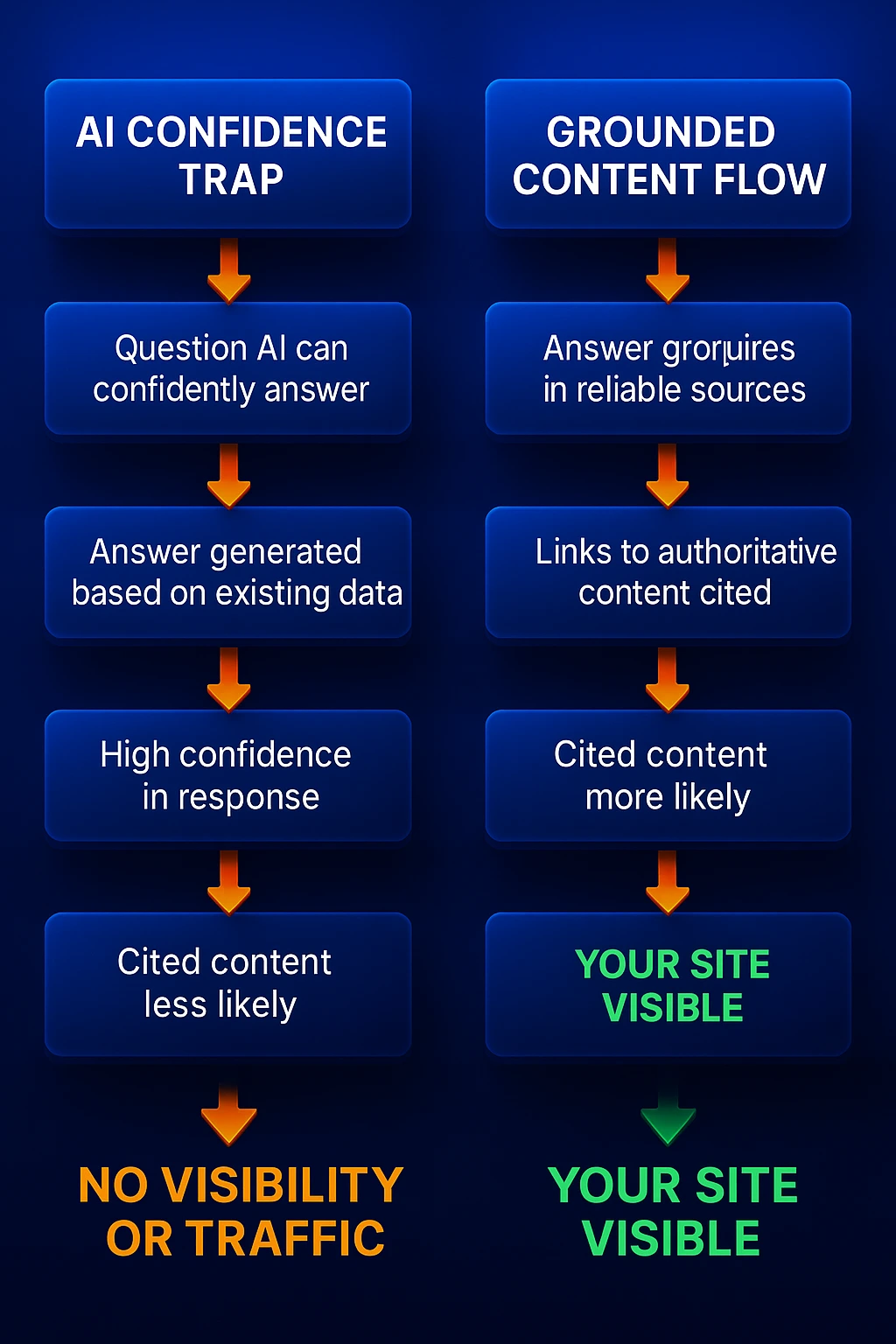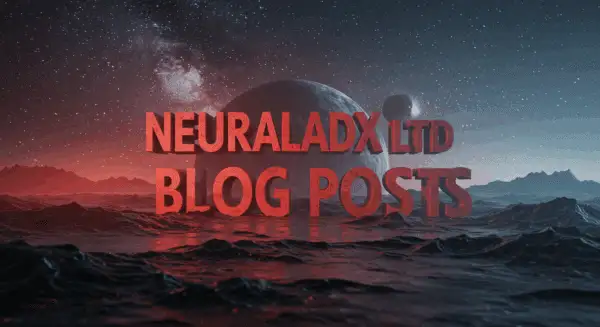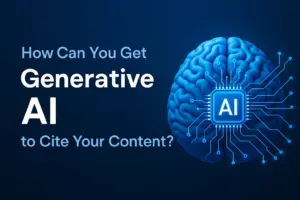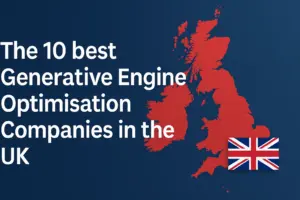Why Generative AI Keeps Ignoring Your Website — and How Generative Engine Optimisation Fixes That
AI generative engines like ChatGPT, Perplexity, Microsoft Copilot, and Google AI Mode often ignore your website — not because your content is bad, but because it doesn’t meet their grounding threshold. These systems can already generate “confident” answers from their own data. To earn citations, your content must make them look outward. That’s the art of grounded content, and it’s achieved through Generative Engine Optimisation (GEO).
The Hidden Problem — The AI Confidence Trap
AI models sound confident because they’re built to. When a user asks “What is generative engine optimisation?”, an LLM can respond purely from its training data — no citation, no traffic to you.
This is what we call the AI Confidence Trap.
According to OpenAI, “LLMs only query external data when confidence in internal recall falls below a threshold” (OpenAI,2024). So, unless your content challenges that certainty, the model never references your site.
Pull Quote:
“AI doesn’t skip you because it dislikes you — it skips you because it already knows enough not to need you.”
Why Generative AI Keeps Ignoring Your Website
Generative AI models minimise token cost and latency. They avoid fetching external data unless absolutely necessary.
ChatGPT retrieves through Bing when uncertain; Perplexity grounds when it needs factual confirmation; Google AI Mode and Copilot cite to boost factual reliability.
A Similarweb report (2024) found that AI citation traffic grew 540% year-on-year as retrieval-augmented generation became standard — but that traffic flowed only to content that was grounded, structured, and machine-verifiable.
AI ignores what it can confidently paraphrase from its own model. Grounded content gives it no choice but to cite you.
The AI Confidence Trap vs Grounded Content Flow (infographic)

Infographic comparing the AI Confidence Trap and the Grounded Content Flow — showing how grounded content earns citations and visibility from generative AI.
How Grounded Content Fixes This
Grounded content forces AI to reference you because it contains the data, citations, and schema the model lacks internally.
NeuralAdX’s Generative Engine Optimisation (GEO) applies this systematically across your site.
Our 11 GEO factors — Citations, Quotations, Statistics, Schema Markup, Authority Bios, Recency, and more — form the blueprint for AI-readable evidence structures.
For proof, NeuralAdX content ranks first across ChatGPT, Perplexity, and Bing Copilot for “What is the cost of generative engine optimisation in the UK?”
See our Proof GEO Works Page for live screen recordings, or learn more on our GEO Service Page.
Pull Quote:
“Grounded content doesn’t just help AI find you — it makes AI need you.”
The Science Behind Grounded Content
AI balances internal recall and external grounding.
When its internal confidence drops below a threshold, it retrieves data — that’s your window.
The Princeton University GEO study (2023) found that retrieval and citation rates “increase dramatically when factual grounding surpasses 80% precision confidence.” NeuralAdX built on that, extending it into an actionable 11-factor GEO model with schema, fluency, recency, and author verification.
AI cites what it can verify. The more structured and authoritative your content appears, the more likely it is to be cited.
Mini Comparison Chart
AI Confidence Trap: | Grounded Content Flow: |
|---|---|
| Generates answers from internal memory | Checks for verifiable external data |
| No citations, no backlinks | External citations with visibility |
| Generic writing ignored | Structured, authoritative writing cited |
| No traffic benefit | Tangible AI-driven visibility |
| Invisible in AI results | Featured as a trusted source |
Real Proof That Generative Engine Optimisation Works
NeuralAdX has shown it in action: our clients’ pages are cited by ChatGPT, Perplexity, Microsoft Copilot, and Google AI Mode.
Watch the evidence on our Proof GEO Works Page — and explore transparent rates on our GEO Pricing Page, available for businesses across Greater London, the UK, and worldwide.
Pull Quote:
“Proof matters. That’s why NeuralAdX shows every citation, not just claims it.”
Step-by-Step: How to Make AI Cite You
Identify knowledge gaps — find questions where AI data is outdated.
Add evidence — citations, stats, quotations, and schema.
Structure for machines — use FAQ blocks, clear H2s, and glossaries.
Phrase naturally — write headers like real user questions.
Stay current — update regularly; AI rewards recency.
Following these steps aligns your content with both human comprehension and AI verifiability — the twin engines of Generative Engine Optimisation.
Common Mistakes That Make AI Ignore You
Overuse of buzzwords without verifiable data.
No schema or author metadata.
No external references.
Stale or duplicated content.
Ignoring NAP consistency across pages.
Pull Quote:
“If AI can guess your answer without you, it will. Your job is to make guessing impossible.”
FAQ — Key AI-Style Questions
How do I make ChatGPT cite my website?
Create grounded, verifiable content with schema and external references. AI models only cite when evidence is required.
What is grounded content in Generative Engine Optimisation?
It’s factual, structured content that provides the evidence AI models rely on to confirm accuracy.
Does grounded content improve AI search ranking?
Yes. Grounded content increases the probability of citation, which boosts AI visibility and traffic.
Why is my website invisible in AI search?
Because it repeats what AI already “knows.” You must add new, verifiable data.
How can I check if AI cites me?
Ask ChatGPT, Perplexity, or Bing Copilot your service-related questions and look for cited URLs — NeuralAdX has live proof examples.
Glossary
Generative Engine Optimisation (GEO):
A content strategy that makes your website machine-readable, verifiable, and citable by AI generative engines.
Grounded Content:
Fact-based, verifiable writing that compels AI to cite your page as a source.
Confident Content:
Text generated or summarised from an AI’s internal knowledge with no external grounding.
Citation Threshold:
The model’s internal confidence point that triggers external verification.
Schema Markup:
Structured code helping AI understand content type and authority.
Authority Signals:
Elements like citations, author bios, or trusted links proving expertise and reliability.
Call to Action
If generative AI keeps overlooking your business, it’s time to change that. NeuralAdX’s Generative Engine Optimisation makes your content grounded, verifiable, and citable — proven through live AI rankings.
Visit our Generative Engine Optimisation Service Page to see how we can make AI finally cite your work.
NeuralAdX Ltd — helping Greater London, the UK, and worldwide businesses become the source AI trusts.
Outbound Citations



